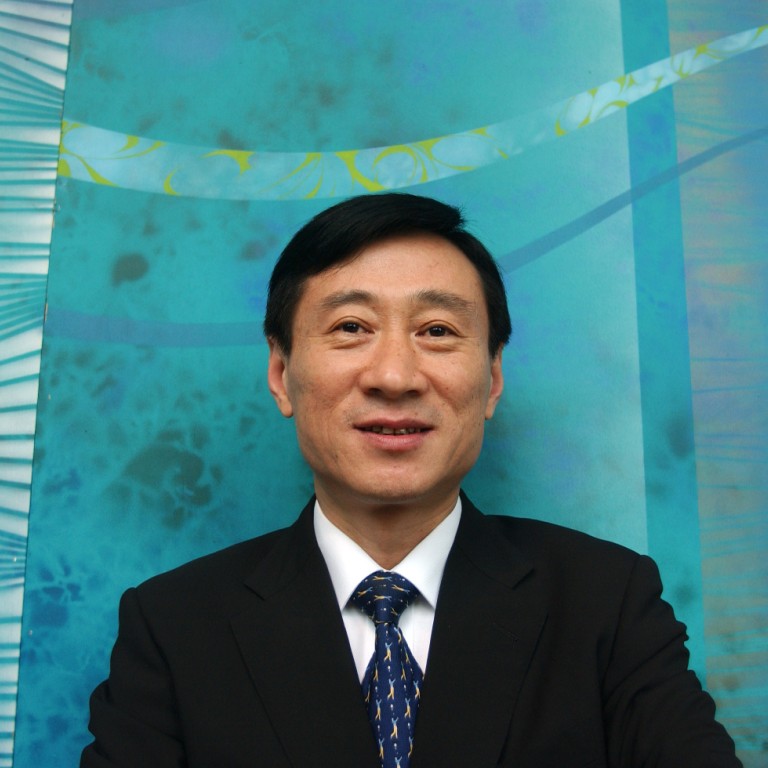
Put this IPO through the mixer and it looks like cashing in
Conch Venture provides a way for management of Conch Cement to unlock its holdings, but the 'reverse spin-off' does raise eyebrows
Bankers and lawyers have been reading the draft listing prospectus of China Conch Venture with great interest this month. What everyone is wondering is how can it list and cash in from the same asset twice.
The asset at stake is Asia's largest cement producer, Anhui Conch Cement, which has been listed in Hong Kong since 1997. Its management is seeking to list its 17.7 per cent control through Conch Venture. You can call it a "reverse spin-off" - which is rare, if not unprecedented.
"If this can be done, I am sure my boss would love to follow suit and list his holding again," said the company secretary of a listed private enterprise who has rung up a lawyer to study the case.
It is controversial because the listing rules state that "it would not be acceptable to the Listing Committee that one business supported two listing statuses".
Listing their stake – worth more than HK$20 billion – in Hong Kong is the only way out
To be fair, Conch Venture has its own operating business other than Conch Cement. It has some cement-related business such as residual heat power generation and waste incineration as well as a port and a hotel. Its operating business is big enough to satisfy the listing requirements on revenue and profit.
Yet, Conch Venture is dependent on Conch Cement, information provided in the draft prospectus shows. In the first six months of this year, Conch Cement contributed more than 77 per cent of Conch Venture's profit and about 70 per cent of its assets.
Its operating business got 55 per cent of its sales from Conch Cement during the same period.
Its management admitted its major business - residual heat power generation - had dived 66 per cent between 2010 and June this year because the market was already saturated in 2011.
Yet, Conch Venture argued that Conch Cement is independent from it. The latter is only included as an investment in an associate company in its financial statements because it holds only 17.7 per cent and has no control over it. There is a reason for it. If Conch Cement is considered a subsidiary over which it has control, its numbers will be consolidated into Conch Venture's financial accounts and the regulator would question whether the same asset is being listed twice.
How Conch Venture can claim it has no control over the cement producer is puzzling. It is the second-largest shareholder of Conch Cement and its chairman, Guo Jingbin, is an executive director of Conch Cement. Among Conch Venture's controlling shareholders, holding 23.6 per cent, are many of Conch Cement's current and former managers. They are Conch Cement's chairman Guo Wensan, executive director Guo Jingbin, the spouse of executive director Zhang Mingjing, and former director and chief executive Ji Qinying, who resigned last month to join Conch Venture's board.
On what basis the regulators accepted Conch Venture's argument is anybody's guess. It is certainly no easy task. The big question is why bother when they are already holding stakes in Conch Cement.
They do not have much choice. Their holding is illiquid in reality. Getting their stakes listed in Hong Kong through a separate entity is the only door to cashing in.
That may be a bit difficult for most investors to understand. One needs to know the history. In 1997, Anhui's government was the only controlling shareholder of Conch Cement. In 2003, it decided to make the management and some employees the second-largest shareholder.
Back then, the sale of state shares remained a taboo, so it was done on the quiet. Instead of getting share options or shares, the management received 49 per cent of the holding company of Conch Cement. Thanks to the mainland's building spree, Conch Cement's profit soared. So did its share price. The management has gained little, though, because its stake - classified as a state stake - was not listed or tradeable.
It made various unsuccessful attempts to cash in. In 2005, it tried to sell 14.3 per cent of Conch Cement to a Morgan Stanley-led consortium. The deal lapsed after two years, failing to get the approval of the National Development and Reform Commission.
In 2006, it spent a fortune to get the approval of mainland minority shareholders and regulators to turn its shares into tradeable stocks in Shanghai. The shares became freely tradeable stocks in 2010 but mainland regulators were concerned that the unloading of controlling state stakes would drive the market further down. No unloading happened.
Listing the stake - worth more than HK$20 billion - in Hong Kong is the only way out. To minimise interventions from the mainland authorities, the management has chosen to list the stake through an overseas company instead of a mainland firm. In order to do so, some of Conch Cement's former managers, including Ji, have become permanent residents of Guinea-Bissau, a small West African state.
A source close to the management denied the listing was being done for the purpose of cashing in, noting that it was not going to unload at the initial public offering.
What would you say?

